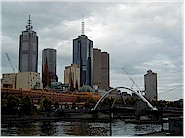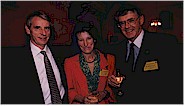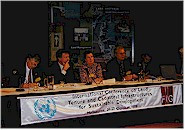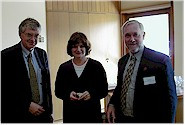The joint United Nations – International Federation of Surveyors (FIG)
International Conference on Land Tenure and Cadastral Infrastructures for
Sustainable Development was held in Melbourne on 24-27 October, 1999.
The aim of the Conference was to explore humankind-land relationships in
the next millennium in the context of AGENDA 21, a product of the UN’s 1991
Rio de Janeiro conference, and the emerging global village. It determined a
broad vision and a set of guidelines for legal, technical and institutional
cadastral infrastructures and systems to support land management and in
particular land administration to ensure sustainable development. It clearly
showed that appropriate land administration systems are essential to
sustainable development, and that without them sustainable development is
simply rhetoric.
The attainment of sustainable development is increasingly urgent. Half of
the world’s population already is concentrated in urban areas with cities
struggling to absorb this impact, yet urban dwellers are set to rise to two
thirds of the world population in 25 years. In this same time frame two
thirds of the world’s population will live in water-stressed conditions. The
severe tensions between economic development and environmental management
must be addressed. Land administration has a clear role and this was
stressed in the Bathurst Declaration on Land Administration for Sustainable
Development. The role of land administration in supporting sustainable
development has significant implications for the administrative structure of
government, private sector activities and individual
rights/responsibilities.
The joint UN-FIG Bathurst Declaration on Land Administration for
Sustainable Development was launched in Melbourne on 25 October 1999. The
Declaration was prepared the previous week at a
workshop in Bathurst, New South Wales, involving 40 leading experts from
around the world representing 5 UN agencies and the World Bank, and a host
of international experts on land, water, tenure reform, indigenous rights,
women’s rights, the information revolution and government/institutional
reform.
Three hundred delegates attended the Melbourne Conference from thirty
countries. The Lord Mayor of Melbourne, Councillor Peter Costigan welcomed
guests on Sunday 24 October at the Melbourne Town Hall and the United
Nations Director of Sustainable Development, Ms JoAnne DiSano opened the
Conference on Monday morning. The Victorian Minister for Environment and
Conservation, the Honourable Ms Sherryl Garbutt MLA closed the Conference on
Wednesday 27 October, demonstrating her support for the initiatives to
administer our land in a sustainable manner.
The Conference was jointly organised by Professor Ian Williamson,
Director, FIG-UN Liaison, Department of Geomatics, The University of
Melbourne and Professor Don Grant, Australian Delegate, Commission 7, FIG,
Surveyor General of New South Wales. The Conference was sponsored by the
United Nations Department of Economic and Social Affairs (Statistics
Division), New York; International Federation of Surveyors (FIG); Land
Victoria, Department of Natural Resources and Environment, Victoria; Land
Information Centre, New South Wales; The Institution of Surveyors, Australia
Inc.; and the Department of Geomatics, The University of Melbourne,
Australia. Support was also provided by a large number of private companies
and institutions concerned with land administration and related
technologies.
The Conference was followed a Roundtable between FIG and five UN agencies
and other international partners. The discussions were focussed on
implementation of the Bathurst Declaration and other FIG/UN Co-operation
during 2000 –2003. These negotiations will be implemented by bilateral
agreements and memoranda of understanding.
The Bathurst Declaration, program, Conference presentations, technical
papers, session summaries of discussion, a full list of sponsors and
supporters and other relevant information can now be found at the FIG home
page.
Already at the moment following documents are published in FIG
publication series and available on FIG home page and will be mailed to
member associations in January 2000:



























